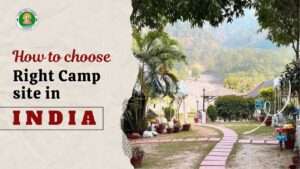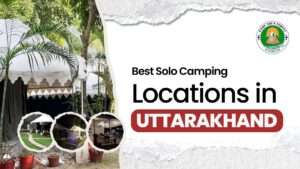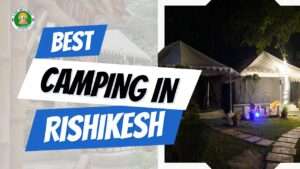

Did you know that India is home to some of the most diverse camping terrains in the world? From the majestic Himalayas to the serene beaches of Goa, choosing the right campsite can either make or break your outdoor adventure. But how do you decide where to set up camp? If you’re looking to make your camping experience unforgettable, there are a few essential factors you need to think about before pitching that tent.
First up, let’s talk about location. It’s no secret that India is packed with jaw-dropping campsites, but not all of them are easy to get to. When figuring out how to choose the right campsite, consider accessibility. Are you looking to drive right up to your spot or hike a few miles to find that hidden gem?
Remember, the whole point of camping is to unwind, not get frustrated navigating through difficult terrains just to reach your spot.
Another crucial aspect when deciding how to choose the right campsite is the terrain. India offers a variety of camping environments, each with its own unique challenges and advantages.
Your comfort level with the terrain and environment will largely dictate your experience. If you’re not used to hiking through steep trails, don’t force yourself into a mountainous campsite. The terrain also impacts the activities you can indulge in—whether it’s trekking, stargazing, or bird watching. And safety? Well, we’ll get into that shortly.
Don’t forget to check the weather, Honestly, nothing ruins a camping trip quicker than bad weather. And in India, with its diverse climate zones, weather can be a total game changer.
Always, always check the weather before you head out. Some campsites are perfect for winter, while others are better during the summer. Imagine camping at Solang Valley during December without the right gear—you’d freeze your toes off, In contrast, places like Rishikesh or Spiti Valley offer pleasant summer camping vibes.
It’s also worth considering seasonal access. Some campsites are only accessible during certain times of the year. A heavy snowfall or early monsoon could mean a roadblock to your chosen spot.
Let’s face it, not all of us are about that “rough it out” life. So when learning how to choose the right campsite, facilities and amenities can play a big role in your decision. Some people want the full wilderness experience, while others just want a little bit of comfort.
Having basic amenities like a clean washroom or access to food can really elevate your camping experience, especially for beginners or those camping with families.
Safety should always be a priority when choosing your campsite. No matter how much of an adventurer you are, camping in unsafe conditions can turn into a nightmare.
Start by checking whether the campsite is prone to wildlife intrusions, landslides, or flash floods. If you’re camping in places like Jim Corbett or Kaziranga, be mindful of the local wildlife, especially after dark.
Always keep an eye on emergency services. How far is the nearest hospital? Does your campsite have an emergency evacuation plan in case of extreme weather or accidents?
Also, it’s a good idea to check reviews and talk to other campers before heading to a new spot. A little bit of planning goes a long way in ensuring your trip is fun and safe.
One of the best parts about camping is the activities you can do while out in the wild. Different campsites offer unique experiences:
The activities available will often depend on the location, so make sure to pick a campsite that offers what you’re looking for. Don’t just settle for any spot—choose one that fits your vibe.
Camping in India is more than just pitching a tent—it’s about choosing the right place that aligns with your needs and expectations. Whether you prioritize location and accessibility, the terrain, or the weather, each factor plays a significant role in crafting your camping experience. By weighing your options carefully, you can ensure that your trip is safe, fun, and memorable. So next time you’re planning a camping trip, remember these tips on how to choose the right campsite in India, and make sure to double-check your gear before heading out.
You may also like :-
Choosing the right campsite isn’t rocket science, but it does require a bit of thought. Start by considering location—do you want to be close to nature or somewhere near basic amenities? Next, think about the terrain (mountains, beaches, deserts, or forests) and whether you’re comfortable with it. Don’t forget to check the weather and ensure the campsite has the facilities you need, especially if you’re not keen on “roughing it.”
Not all campsites are easy to reach, While some allow you to drive right up to them, others, especially in hilly or remote areas, might require a hike or special transport like 4×4 vehicles. If you’re new to camping or want a hassle-free trip, choose campsites with easier access.
Yes, camping in India is generally safe, but it’s important to do your research. Always pick campsites with good reviews and check if they’re located in areas prone to wildlife or natural hazards like landslides or flash floods. And, of course, pack emergency supplies and know where the nearest hospital or help center is.
The facilities you need depend on how much of an adventure you want some prefer organized campsites that offer washrooms, food services, and even electricity. Others enjoy wild camping, where you bring your own gear and go fully off the grid. It’s all about your comfort level.
It can be, but you’ve gotta be ready for some serious rain Monsoon camping in places like Chikmagalur or Coorg is magical, but with rain comes muddy paths, leeches, and waterlogged gear. If you’re not fully prepared, it might end up more hassle than fun. Pack waterproof gear and know the risks of landslides and flash floods.
Absolutely, but winter camping in places like Manali or Auli is not for beginners. The freezing temperatures, snow, and thinner air can be tough to handle without the right gear and preparation. Make sure you’re packed with warm clothes, proper sleeping bags, and snow camping essentials.
The terrain hugely impacts your camping experience and activities. Mountain campsites are great for trekking, while beach camps offer water sports and chill vibes. Desert camps are all about stunning sunsets and camel rides. Make sure the terrain suits both your interests and physical comfort.
Always inform someone about your location, carry a first aid kit, and familiarize yourself with emergency contacts and local wildlife. Campsites in forested areas, like Jim Corbett, require extra caution because of wild animals. And never forget to check the weather before heading out—it can make or break your trip.
There are plenty of family-friendly campsites across India with basic amenities like washrooms, food options, and easy access. Places like Rishikesh and Manali are perfect for family camping, offering activities like river rafting and nature walks that everyone can enjoy.
Camping isn’t just about sitting by the fire—there’s a ton you can do depending on where you are, you could go trekking, kayaking, stargazing, birdwatching, or even attend local cultural events. Choose your campsite based on the activities you’re most excited about.






Our luxurious A.C. Swiss tents are equipped with everything you need to have a comfortable stay. We strive to ensure that you don’t have to sacrifice any of the luxuries you are accustomed to while camping. That includes access to hot showers and running water. We at Camp Aquaforest pride ourselves in providing a top-notch camping experience. Our goal is for you to have fond memories of your stay with us and look forward to coming back year after year.
© 2022 Aquaforest Rishikesh, All Rights Reserved.